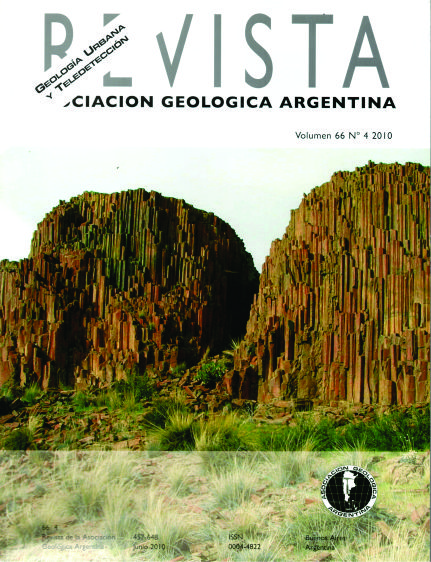Reconnaissance of hydrothermal alteration with the ASTER sensor, in the middle course of Río Santa Cruz (31°40' S), province of San Juan
Main Article Content
Abstract
The advanced spaceborne thermal emission and reflection radiometer (ASTER) was used to identify different deposits of hydrothermal alteration which indicates that several important lithological groups can be mapped in areas with good exposure by using spectral-matching techniques. Different methods are tested in order to identify and map zones with hydrothermal alteration minerals using the ASTER dataset. These areas are often referred to having large quantities of clay minerals which can be detected using multispectral imagery. Several authors have developed different procedures to map these hydrothermal minerals. Among the simplest ones, band combinations and band ratios have proven to be very useful tools for identifying targets. Lithology indexes point to reinforce the spectral response of this group of minerals working with band products and ratios. So far, these techniques do not need a full image correction. Other methods here employed require further processing of the ASTER scene, especially when spectral data are used. These techniques include spectral angle mapper (SAM) classification and minimum noise fraction (MNF) transforms to segregate noise and reduce computational requirements. Spectral data used in this paper were collected from field samples using SWIR (short wave infrared) reflectance spectroscopy and derived from the scene itself. These mapping methods have been tested in areas of known hydrothermal alteration occurrences, e.g. Los Pelambres, El Pachón and Altar, and in other sector of Santa Cruz region like Carnicerias and La Coipa; all of these at the south westernmost part of San Juan province. The result of this work is here presented as a series of images showing lithology indexes and an expected mineral assembly.
Article Details

This work is licensed under a Creative Commons Attribution-NonCommercial 4.0 International License.
Nota de copyright
Los autores conservan los derechos de autor y garantizan a la revista el derecho de ser la primera publicación del trabajo licenciado según una licencia de atribución Creative Commons que permite a otros compartir el trabajo con el reconocimiento de la autoría y de la publicación en la que se publicó por primera vez.
Declaración de privacidad
Los nombres y direcciones de correo electrónico introducidos en esta revista se usarán exclusivamente para los fines declarados por esta revista y no estarán disponibles para ningún otro propósito u otra persona.

